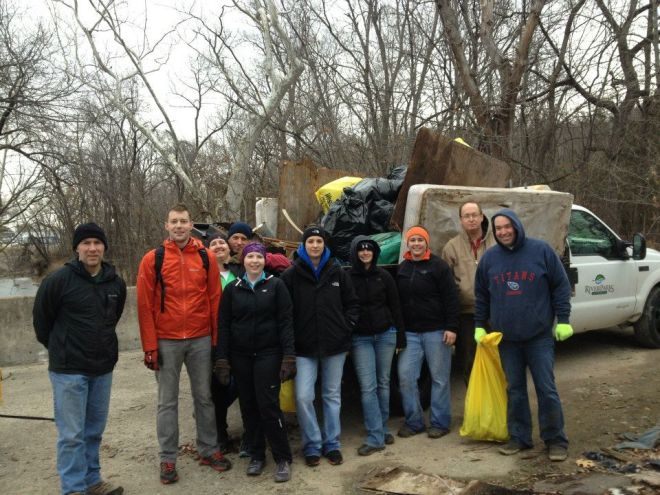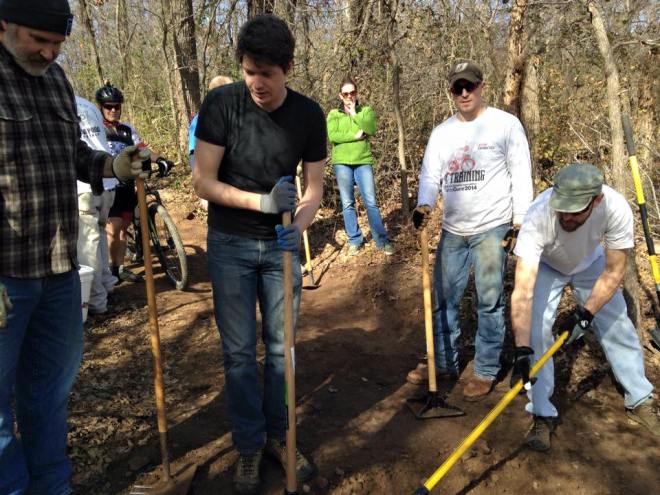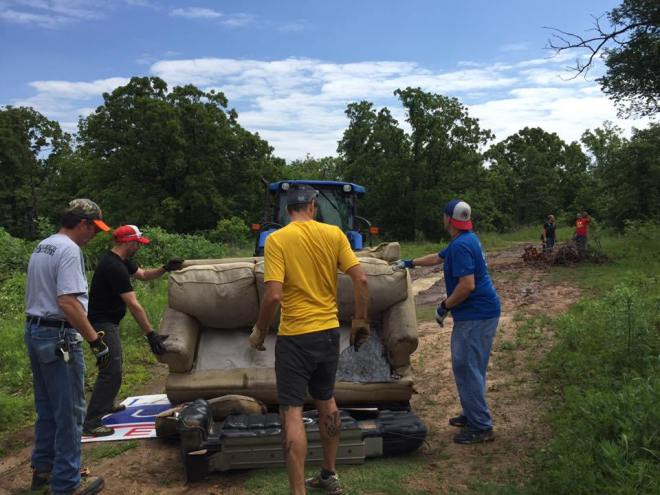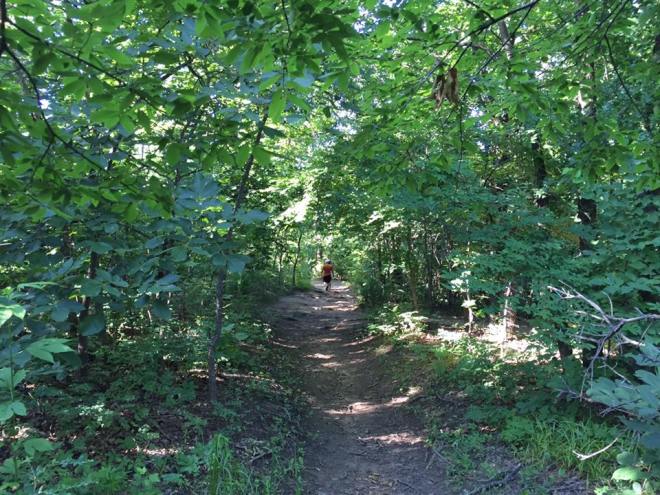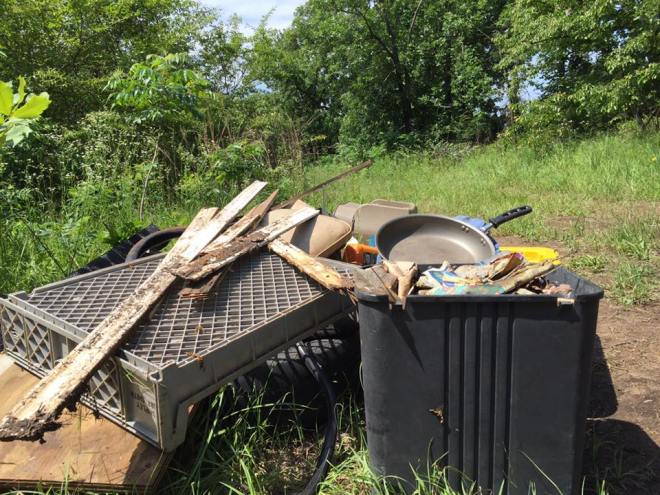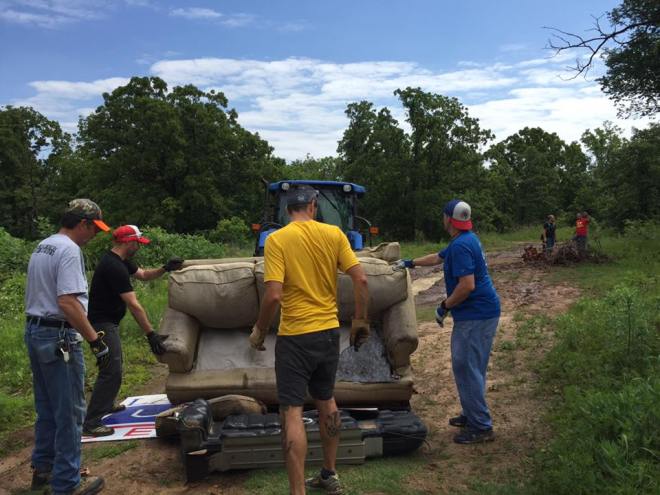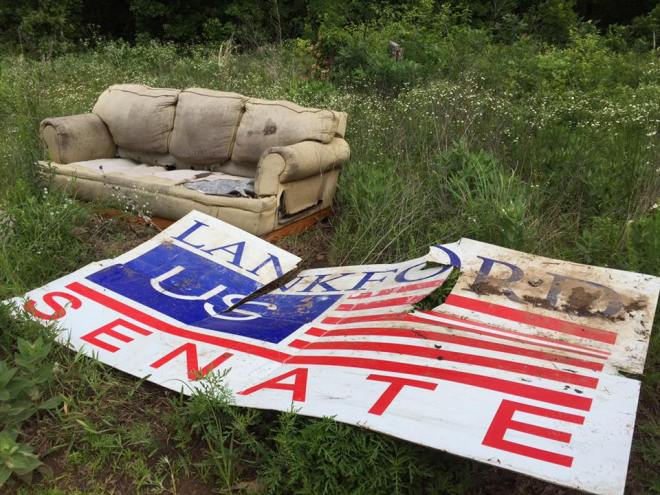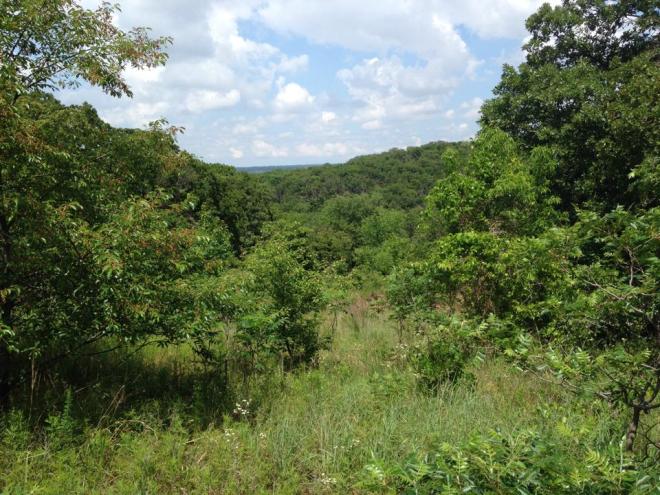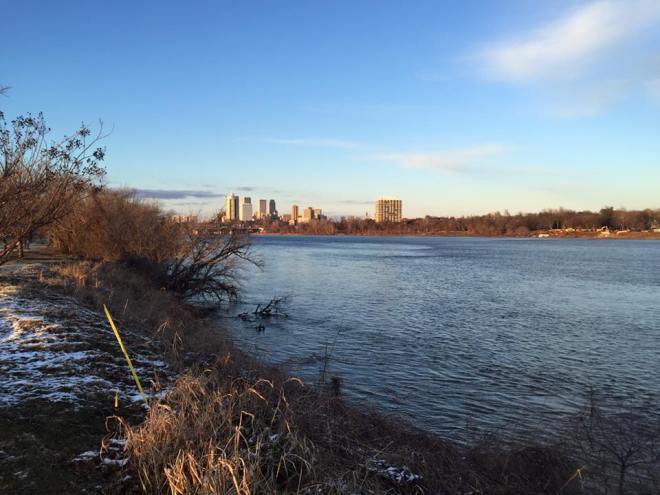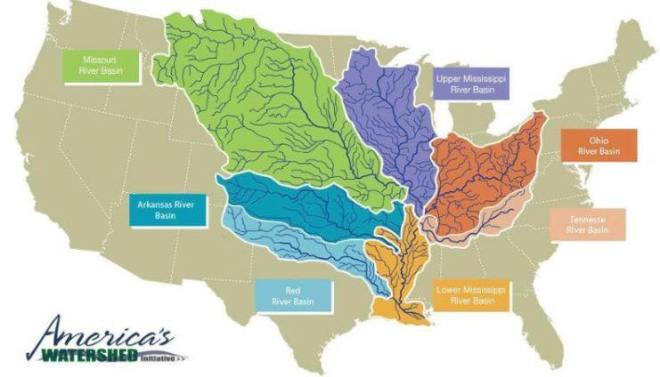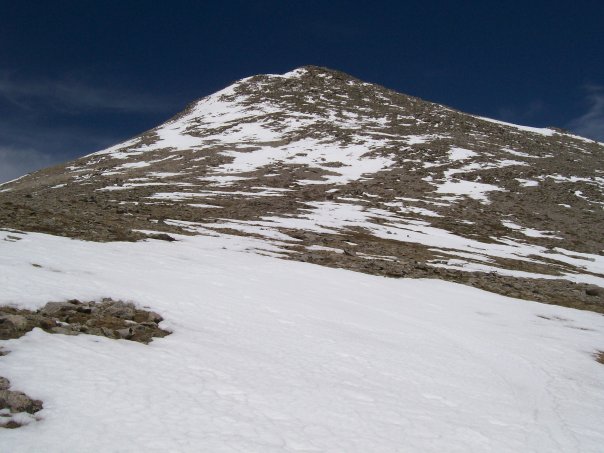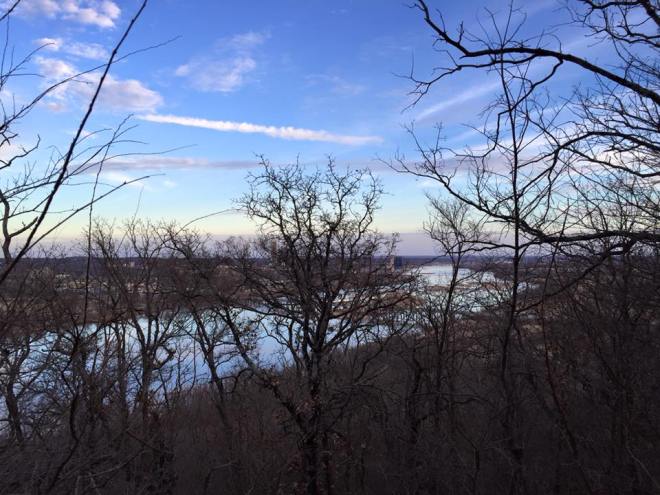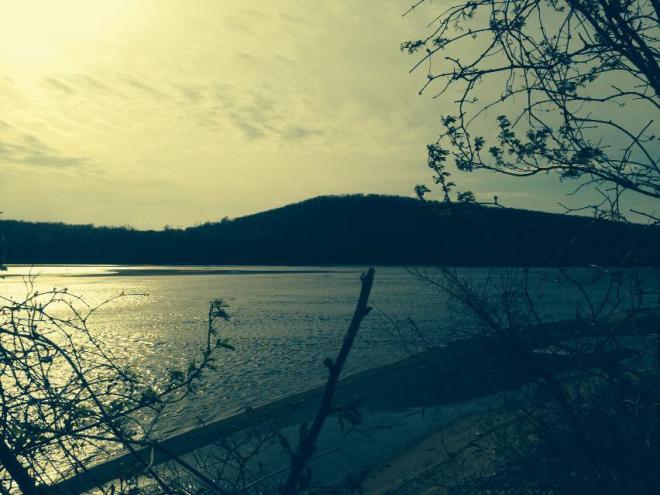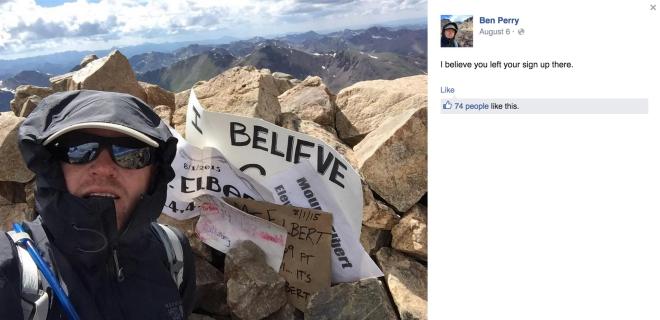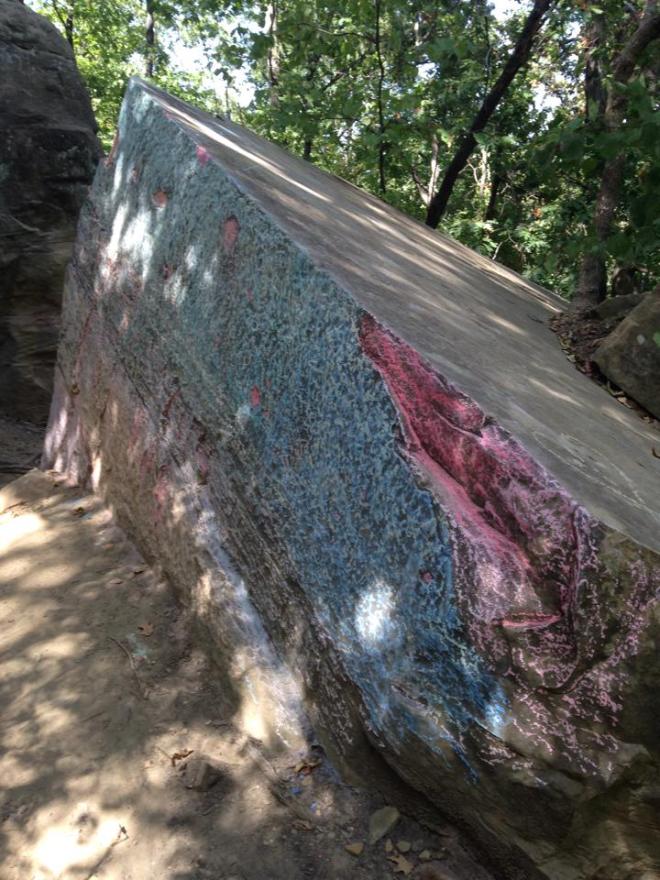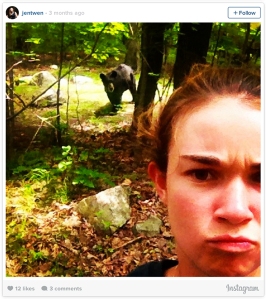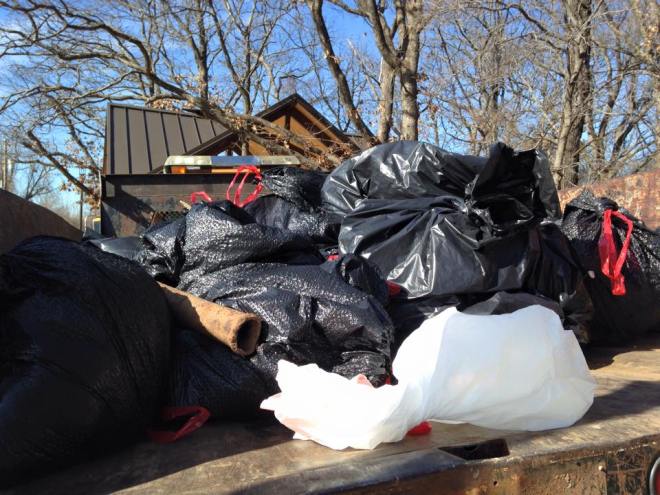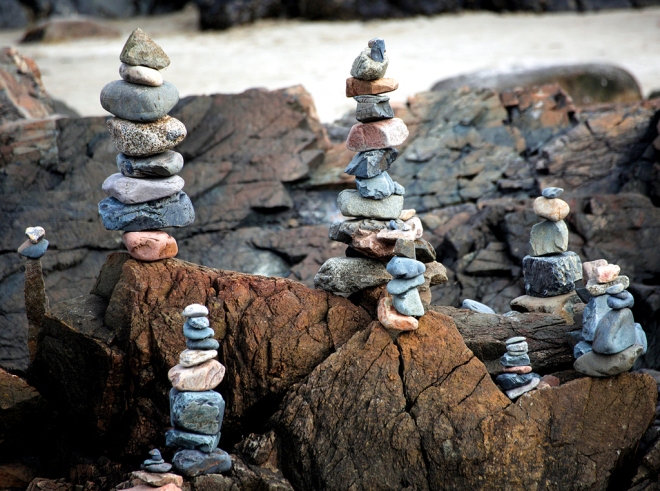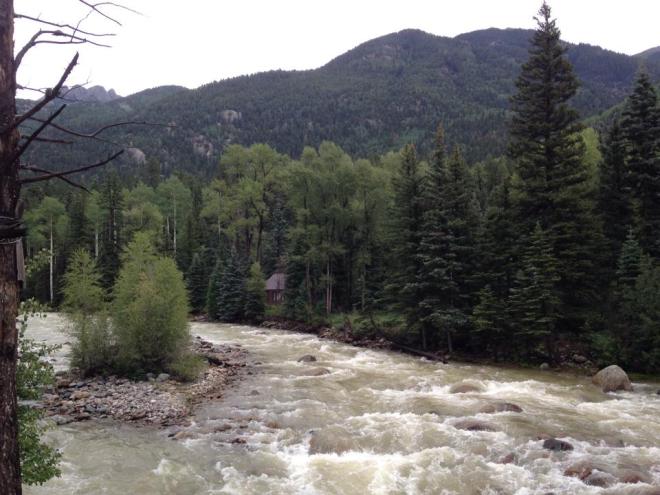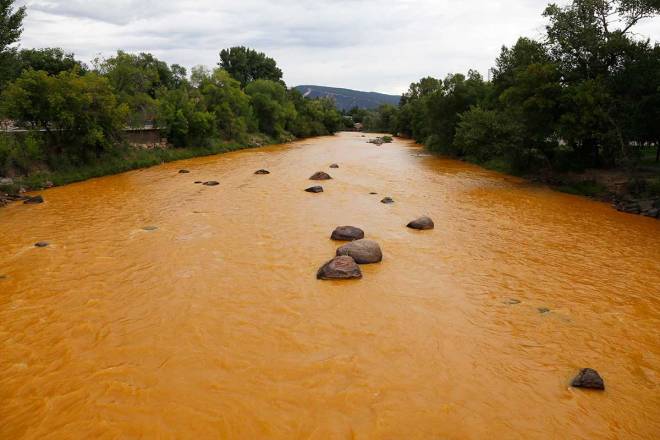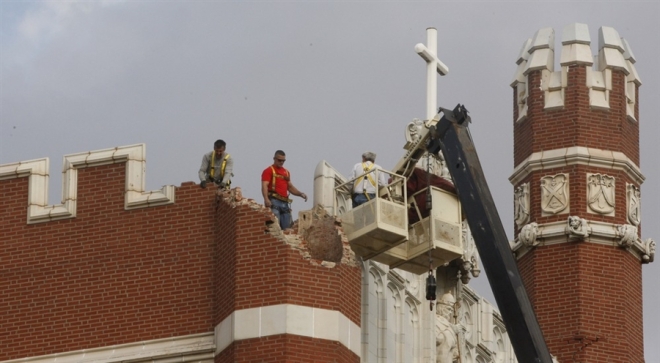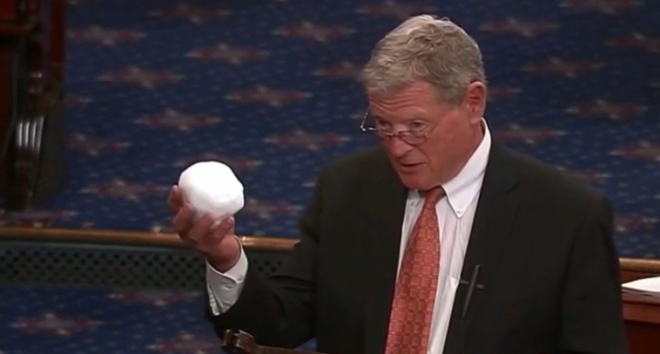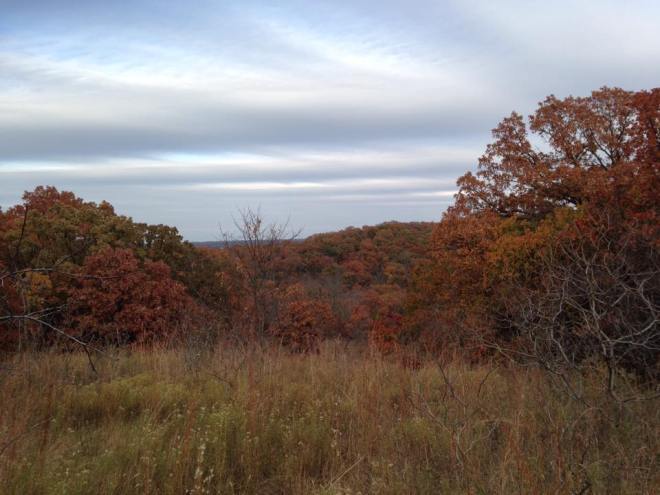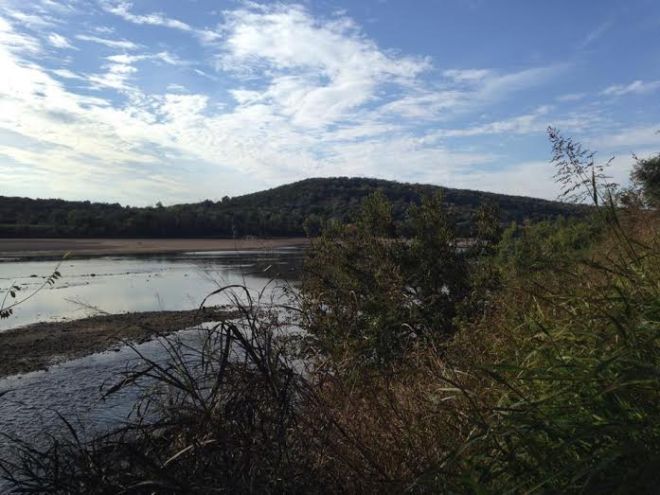
Turkey Mountain and the Arkansas River in Tulsa. Two natural resources that people are starting to value more.
If you want to know how important something is to people, just check out how much time, energy and money they spend on it. The upper end of that time/effort/money spectrum is of high importance. If something is out-of-sight and out-of-mind, you can bet on a bad case of no-one-cares.
This is important to consider when it comes to the outdoors, and how people relate to it. A population that spends a good amount of time outside is going to be a healthier one, and more in tune with their world. Conversely, people who languish too long inside don’t know their world, and often sink into illnesses ranging from heart disease to cancer to depression.
And an entire community caught on the wrong end of this scale is going to see those problems magnified.
I use the term “out-of-sight, out-of-mind” often when it comes to issues of conservation, and I don’t think it’s any accident that places where conservationism is an afterthought are some of the country’s unhealthiest. I see that here in my home state. Oklahoma is smack in the middle of stroke alley, with some of the highest rates of obesity, heart disease, stroke and diabetes in the U.S. Stoking the indoor life are our brutally hot summers. Networks of highways, huge subdivisions and a spiderweb of streets are designed to take us from one place to the next, planted in an office chair, the driver’s seat or on the couch, marinating in the same climate-controlled temperatures. Oklahoma’s metropolitan areas are some of the least walkable and most cyclist-unfriendly you’ll find.
A few green spaces are set aside, mostly for ball fields and playgrounds, but most of what used to be grasslands and forests gets cleared for housing developments and parking lots. Losing those wild lands means fewer trees and grasses to absorb potential floods, clean up polluted air and keep temperatures down. And so you get more heat, crappier air and more excuses to stay firmly rooted inside, away from the distressed rivers and creeks and dwindling woodlands that are seen as obstacles to progress and impediments to commerce. By design, we’re isolated from the outdoors, and by default, the environment. All the while, a community’s health keeps deteriorating.
This is a pretty grim picture, and it’s not unique to my home state. This is the case just about everywhere else, too. But even here, in Urban Sprawl America, there are signs of hope. And maybe of changing minds.
I’ve got some friends who, a few years ago, put together this audacious idea to have a weekend campout at the Turkey Mountain Urban Wilderness in Tulsa. Turkey Mountain is an island of intact woodlands surrounded by a sea of suburban sprawl in south Tulsa. It’s a favorite destination for mountain bikers, trail runners, hikers and nature enthusiasts, and a real gem for the city. You’re not allowed to camp there, though.
But in getting a special permit from the city to hold this campout, organizers figured they could lure a decent crowd of people to show up, pitch a tent, grill up some food and enjoy live music. And maybe hike or bike a few miles on the trails.
The success of the event – it’s grown every year so far – served as a reminder to me. I think when people make a conscious effort to make the outdoors visible and appealing, people will value it more. And in so doing, help their communities and even their own health.
TAKING THE INITIATIVE
Like I mentioned earlier, a few of my friends – Tyler Hanes, Ryan Howell and Matt Carver – came up with this campout idea. It eventually morphed into an annual fall event called BaseCamp, initially attracting a few hundred participants, but now growing into nearly 1,200.
Folks run, bike and hike during the day, or just hang out and listen to music at the tent sites, eat some grub and crack open a few cold ones. Families make a weekend of it. It’s a good time, capped off at night by a “glow hike” where campers head into the woods, glow sticks in hand, and form a long neon conga line that snakes through Turkey Mountain’s winding, rugged trails.
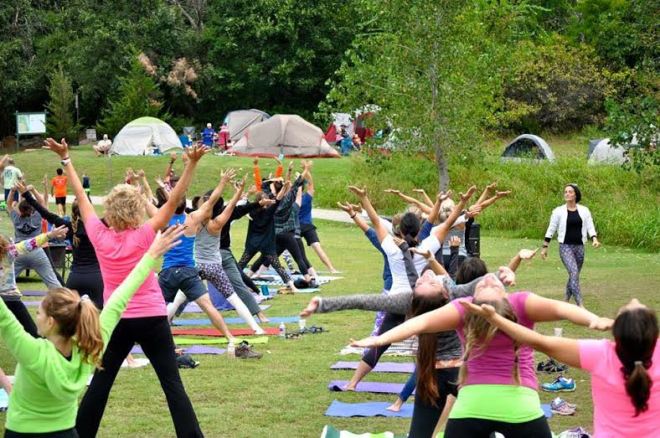
A group yoga session at this year’s BaseCamp festival at Turkey Mountain. Organizers said up to 1,200 people attended this year’s campout event. (BaseCamp Facebook page photo)
A reporter and a photographer from the local newspaper went there to check it out last weekend. I was taken aback by what one guy had to say.
“Anything that helps improve the general awareness of the environment is going to be a good thing for Oklahoma,” Isaac Rutel told the Tulsa World. Rutel and his family came up from the Oklahoma City suburb of Choctaw to enjoy the weekend at Turkey Mountain, about 90 minutes or so from their home.
Isaac gets it. By being out there, he can appreciate Turkey Mountain’s value, despite it being devoid of houses that generate property taxes and home sales, or strip malls that crank out service jobs and sales tax earnings.
My friend Ryan, an avid mountain biker, summed it up like this:
“It’s a great way to be introduced to the mountain — coming out and sleeping under the stars, hearing some bands, going for a hike in the afternoon,” he told the Tulsa World. “We want to keep Turkey (Mountain) preserved the way it is, and the more people we can get passionate about this place and the more people we can get to say, ‘I know Turkey and I love it,’ then the more, hopefully, we can help… get funding and keep this place alive.”
Keep in mind that none of these guys are the well-heeled, politically connected or otherwise high profile personalities you’d expect to launch something like this. They’re just a few guys who had an idea, tried it out, and made it work. They provided a good time, and the event has grown despite being planned on the second Saturday of the college football season, where most Okies are on the sofa channel-surfing through the games. Beyond a bit of fun, they’re also opening eyes. Ordinary guys, taking the initiative, and showing people the value of getting outside, getting moving, and preserving what little bit of real nature we have left in the city.
BEING HEARD
Turkey Mountain’s popularity has surged in recent years, going from a place infrequently visited to one of Tulsa’s most popular draws. Hundreds and even thousands go there every week, and it’s host to a number of trail running and mountain bike races.
But over the past year or so, it was also a source of controversy.
Last year, shopping mall developer Simon Property Group announced plans to build an outlet mall on what, to them, appeared to be a promising piece of real estate near U.S. 75.
But it also happened to be on Turkey Mountain’s western edge, and just south of a YMCA kids’ camp. The plan would have wiped out a chunk of trails and several acres of woodlands, to be replaced by low-slung buildings and concrete. The “in nature” experience at the kids camp would have been blunted severely with a mall looming overhead at the top of a hill.
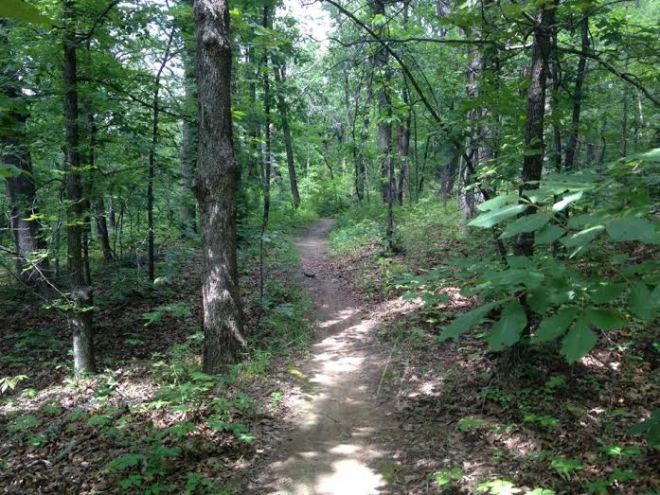
One of the trails at Turkey Mountain. Enjoying time outside and in nature is growing in its appeal for Tulsa residents, part of the reason why opposition to an outlet mall on the western edge of Turkey Mountain drew so much opposition.
The land was privately owned, but its proximity to the rest of Turkey Mountain drew the ire of a big chunk of the city. A grassroots group – the Tulsa Urban Wilderness Coalition – started, with its initial goal of at least forming a voice to prevent further encroachment into the woods.
But within weeks, it became clear that the group would go further, and actively lobbied against approval of the project. An online petition gained more than 8,000 signatures, and “town hall” events to discuss the mall proposal were packed houses, with most in attendance voicing opposition to the developer’s plan.
The mall was something the city and Simon, a multi-billion-dollar corporation, wanted. But prompted by the TUWC, the people flatly said “no.” Simon pulled out of its deal on that parcel of land and is building elsewhere in the metro area, and for now, the land that had been pegged for development remains as it was.
The bigger benefit, however, is manifold. The community received an organization that promoted the value of wild green space, and with that, volunteer efforts to clean up the forest, repair trails and scour the creeks. Plans are underway to do more, including purchasing land to protect what’s there for the future.
Conservationist advocacy, it would seem, has allowed the community to learn more about what it has, and now that it’s finally on the radar, people suddenly care. Turkey Mountain is no longer out-of-sight, out-of-mind.
CIVIC LEADERSHIP
The beginnings of Turkey Mountain go back a few decades. City leaders back then decided to set aside that patch of land for recreational purposes, and in doing so intentionally tried to keep it as wild as possible. That sort of foresight has led to what it’s become now, a premier outdoor recreation destination not only for locals, but also for people from far outside the city.
But a more recent example of community leadership – and a stunning one at that – comes from down the turnpike.
If you go to Oklahoma City, you’re going to notice a couple of things. First, it’s flat. Very flat. That’s not a knock, it’s just a fact of building a community in the heart of the Southern Plains.
And second, aside from a few manmade lakes, it’s fairly dry. The further west you go in Oklahoma, the skinnier the rivers get.
Now for the stunner: Oklahoma City is home to the U.S. Olympic Rowing Training Center.
How does this happen in a town with a river that city crews used to mow during the summer?
In the early 1990s, city leaders proposed and voters approved a sales tax program to fund a number of projects. A new baseball stadium, an indoor arena, a canal through downtown and a collection of other projects were part of the mix, helping fuel an ongoing renaissance in that city.
But also part of the plan was a series of dams that put more water in the North Canadian River just south of downtown. Now instead of a muddy trickle, a long, broad stretch of water – dubbed the Oklahoma River – flows by, inviting water sports enthusiasts to its shores.
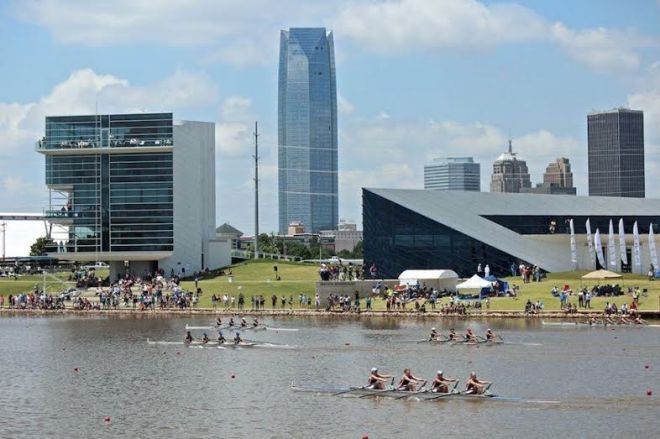
The Boathouse District near downtown Oklahoma City. (Boathouse District Facebook page photo)
The response was almost immediate. A couple Oklahoma colleges created rowing teams, holding their practices and competitions there. Boathouses were built, as were bike trails. A triathlon was held. And ultimately, the city was able to recruit the U.S. Olympic program to plant its rowing training center in the middle of Oklahoma.
Where none existed, civic leaders created a water sports culture, one that is growing in popularity. People rent flatwater kayaks. Recreational rowing teams have formed. OKC has even become the scene of annual dragon boat races. The Boathouse District has become one of Oklahoma City’s best outdoor recreation assets.
I won’t say every Oklahoma City resident is now a rowing fanatic, but there are more people being active on the water now then there were before the river project was completed, and demand seems to be rising. Up next for the river is another man-made water feature, a $45.2 million whitewater kayak and rafting course.
Whitewater kayaking? In Oklahoma City? It’s going to happen. The project is under construction, and if past success is any indicator of future results you might see another improbable water sports story unfold in Oklahoma’s capital city.
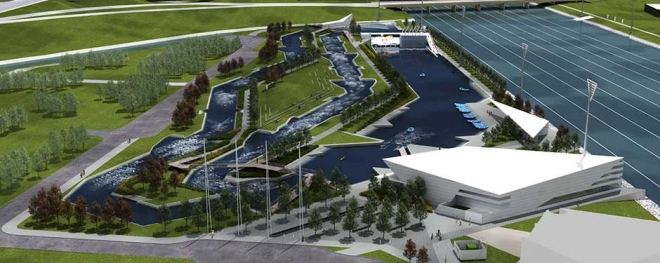
An artist’s rendering of the whitewater park being built near downtown Oklahoma City. (Boathouse District Facebook page photo)
The lesson here is clear: When government takes the health of its people seriously, good things can happen. I’m not sure anyone outside of Oklahoma City would have pegged that community as a burgeoning hub for rowing and paddling sports. I’m sure there were plenty of doubters in Oklahoma City itself. But there it is. City leaders committed to an idea, and more of its people are getting outside and active as a result.
And who knows? Maybe some of these OKC kayakers and rowers will search for wilder places to ply their skills, and in so doing, learn more about the value and importance of healthy waterways.
LOOKING AHEAD
It would be a stark reversal of culture if Oklahoma boating enthusiasts became advocates for protecting America’s wild streams and rivers, but stranger things have happened. I can only point to my own life, having been exposed to nature at a young age and frequently since then, and how those experiences have shaped my views on conservation and health.
In my mind, they’re linked.
I’m under no illusion that places like Oklahoma, or Texas, or anywhere else in Red State country are going to become hotbeds for conservationism. And I don’t expect these states’ health woes to correct themselves overnight.
But think on this: In Tulsa, you have an asset that is widely regarded as one of the premier mountain biking destinations in the country, a highly regarded trail running haunt, and a shining example of what an urban green space can be.
In Oklahoma City, you have a relatively new but nationally known center for human-powered water sports that is growing.
These are things you’d expect in the mountain communities of the Appalachians, the Rockies, the Sierras or the Cascades. Certainly not in the flatlands. And yet here they are.
These are reasons for optimism. People care enough to speak up for the outdoors and outdoor recreation, even to the extent of paying a little extra in terms of tax dollars. Tens of thousands of people are taking charge of their health outside, on their feet, on a bike or in a boat.
And most importantly is this: The more time folks spend outdoors, the more they’ll appreciate the outdoors, as what was once more of an abstract concept becomes front-and-center in their lives. However we can make that happen – as individuals, as advocates, or as elected leaders – is crucial not only for the people we live with, but for the health of the land itself.
Learn more about the Tulsa Urban Wilderness Coalition, including how to donate, here. To learn more about Turkey Mountain, go here. And to find information about the Oklahoma City Boathouse District, go here.
Bob Doucette

